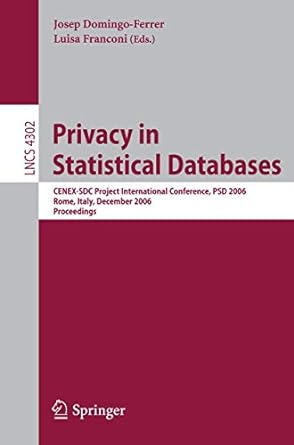Question
Problem 4. In the runtime analysis of the Random Quicksort algorithm in lecture (textbook section 2.5, p 37), we assumed, for simplicity, that each of
Problem 4. In the runtime analysis of the Random Quicksort algorithm in lecture (textbook section 2.5, p 37), we assumed, for simplicity, that each of the elements in the input were unique. That is, yi < yi+1 < < yj1 < yj . From that, we concluded that yi is chosen as a pivot before any other in the set Y ij = {yi , yi+1, . . . , yj1, yj} with probability 1/|Y ij | = 1/(j i + 1). Similarly, the probability that yj is chosen as a pivot before any other element in Y ij is also 1/(j i + 1). 1
(a) Now, lets remove the assumption that every element is unique. In particular, yi yi+1 yj1 yj is all we know. Why does the reasoning above not work anymore? (Hint: provide an example where the probability is incorrect)
(b) Indicate a slight change in the way we stated the Random Quicksort algorithm, or a slight change in the analysis, so that we can still conclude that Pr(yi and yj were compared) is still exactly 2/ ji+1 .
Step by Step Solution
There are 3 Steps involved in it
Step: 1

Get Instant Access to Expert-Tailored Solutions
See step-by-step solutions with expert insights and AI powered tools for academic success
Step: 2

Step: 3

Ace Your Homework with AI
Get the answers you need in no time with our AI-driven, step-by-step assistance
Get Started


